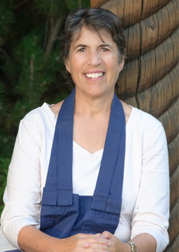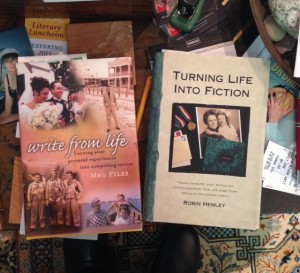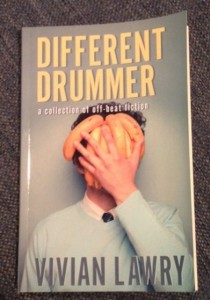

As you probably know by now, I collect books the way a magnet collects iron filings. Whatever you want to do with your writing life—or with your life in general—there’s a book for that! And probably a class as well. Do an online search for writing classes in your area and see what comes up! Some have a modest fee—or an immodest one! Check local libraries and retirement communities, which in the Richmond area often offer such instruction free.
Just now, writing memoir is popular, especially among older people. One of the points stressed in the recent James River Writers Conference panel on Compelling Characters was that even villains are heroes in their own stories. People want their hero stories known. So there are lots of classes on memoir writing, and books as well. These include Natalie Goldberg’s Old Friend from Far Away; Sue William Silverman’s Fearless Confessions; Lisa Dale Norton’s Shimmering Images; Frank P. Thomas’s How to Write the Story of Your Life; and Judith Barrington’s Writing the Memoir.
Every writer’s heard the advice, “Write what you know.” And what do you know better than your own life, right? But memoir is supposed to be as thorough, true, and factual as the writer can make it. So memoir isn’t for everyone. And so far at least, it’s not for me. Of the dozens of short stories I’ve had published, none is memoir.
On the other hand, most of them are memoir-based fiction. Such fiction still tells a true story, but is based only partly on “what really happened.” There are fewer helpful books in this area—on my shelves, at least—but two recent favorites are by Meg Files and Robin Hemley.

I’m working on a collection now titled Almost Family. As you might gather from that title, I include other people’s lives in my writing, too. One of my earliest publications was “The Pig Sticker.” The factual part of that story is my father and uncle butchering hogs. The true but fictional parts are everything else. In actuality, I was the toddler throwing my rag doll into the horse watering trough. In story as written, I was older, helping my mother and aunt with butchering-day chores and overhearing conversation that never happened. You can read that story here on my website. In Different Drummer, several of the stories are memoir-based, including “After The Fair,” which draws on three different women’s lives for the factual parts.

It’s perfectly legitimate to use bits of your real life or the lives of those you know in your writing. This is true whether you are writing memoir, essay, fiction, or poetry. As Susann Cokal told the audience at a past JRWC, “People will always look for you in your writing. If you write a mad, passionate sex scene that takes place on top of a desk, people visiting your office or study will look askance at your desk—and may even ask whether that’s the one.” To spare me—and my family—I like being able to say, “But it’s fiction!”